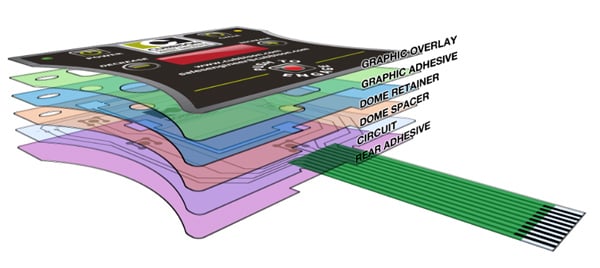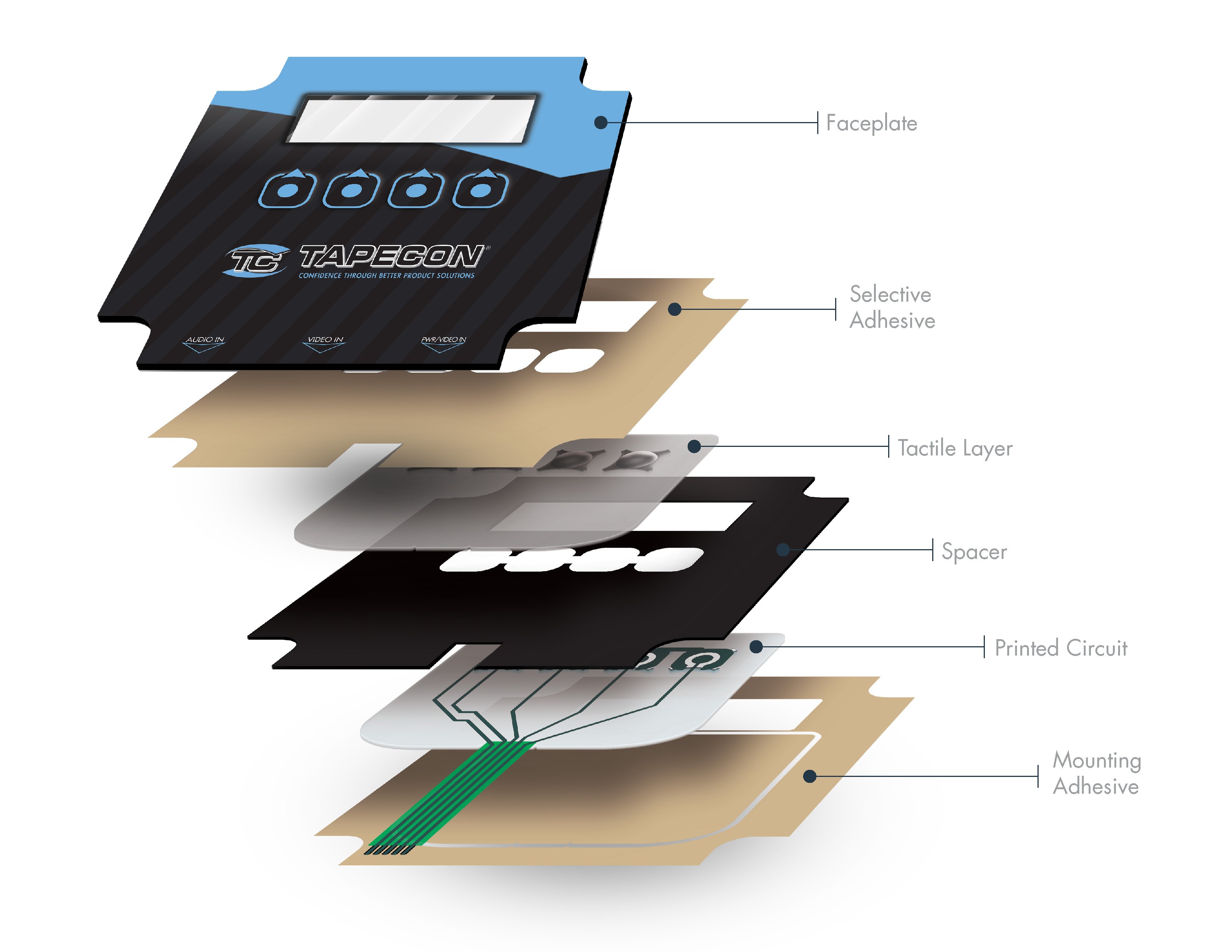How Membrane Switches Are Used to Enhance Safety and Performance in Machinery
How Membrane Switches Over Enhance Individual Experience in Instruments
Membrane switches play a pivotal role in enhancing customer experience across different devices by integrating user-friendly style concepts and efficient tactile comments systems. As industries significantly seek remedies that incorporate toughness with user-centric layout, the ramifications of membrane changes warrant more exploration to fully value their impact on contemporary technology.
Improved Tactile Feedback
Improved responsive responses in membrane switches significantly improves user experience by providing clear, responsive communications. This feedback is crucial in applications where precision and individual self-confidence are paramount, such as clinical devices and commercial controls. By including functions such as tactile domes or increased components, membrane layer changes enable individuals to really feel a distinctive response upon activation, consequently decreasing the likelihood of accidental inputs.
The assimilation of responsive feedback offers to bridge the void between the physical and electronic worlds, providing customers a reassuring confirmation of their activities. This communication not just promotes a feeling of control but also lowers the cognitive lots, as users can count on their sense of touch to navigate via numerous functions. Boosted tactile comments can result in increased effectiveness, as drivers can execute commands quickly without needing to aesthetically confirm each activity.

In addition, the reliability of responsive comments in membrane layer switches adds to overall product functionality. When individuals can without effort involve with a tool, it fosters an extra positive interaction, resulting in greater contentment and commitment. Hence, the execution of improved responsive feedback is an essential factor to consider for developers aiming to elevate the user experience within their products.
Improved Looks and Style
Visual allure plays a critical duty in the functionality and marketability of membrane switches. These buttons use a seamless integration of kind and function, enabling manufacturers to create visually striking user interfaces that boost customer interaction. With personalized styles, shades, and textures, membrane layer buttons can be tailored to align with brand name identification and item aesthetics, making them an eye-catching selection for different applications.

Additionally, the usage of high-grade products and printing methods makes certain that the aesthetic elements stay vivid and intact in time, strengthening the total quality of the gadget. By focusing on looks in membrane button style, suppliers can dramatically enhance the individual experience, fostering a positive psychological link in between the individual and the device while promoting brand name loyalty.
Raised Resilience and Durability
Beyond their aesthetic allure, membrane buttons are identified for their raised resilience and longevity, making them a useful option for Read More Here a wide variety of applications. Created from durable materials such as polyester or polycarbonate, these switches can hold up against severe environmental problems, consisting of exposure to dampness, dust, and chemicals. This strength is vital for gadgets made use of in commercial, clinical, and outdoor settings, where devices is commonly based on rigorous usage.
Membrane layer switches are additionally much less vulnerable to mechanical failure contrasted to conventional mechanical buttons. The absence of relocating parts reduces the chance of deterioration, thereby expanding the operational life-span of the tool. Additionally, their secured style stops contaminants from getting in the switch, even more enhancing dependability.

Simplified Customer Interaction
Three essential variables add to the streamlined user interaction supplied by membrane switches: instinctive layout, tactile comments, and customizable formats. The user-friendly design of membrane layer changes permits individuals to quickly understand and navigate the user interface without comprehensive training. This user-centric strategy ensures that controls are realistically prepared, helping with ease of use and minimizing the cognitive load on customers.

In addition, adjustable layouts make it possible for makers to customize the user interface to specific applications and user needs. By enabling for the assimilation of tailored symbols, shades, and switch setups, membrane layer buttons can Website be made to match the requirements of varied customer demographics, improving usability and availability. Collectively, these elements add to a structured communication experience, making membrane layer switches a favored selection for devices targeted at improving customer satisfaction and operational performance.
Versatile Applications Across Industries
The advantages of membrane check here switches over prolong past simplified customer interaction, locating applications throughout a multitude of sectors. In the medical care sector, they are utilized in clinical devices such as diagnostic devices and mixture pumps, where dependability and ease of cleansing are extremely important. Membrane layer switches give a durable user interface that can endure the roughness of a clinical setting while ensuring easy to use procedure.
In the customer electronics sector, these buttons are widespread in house appliances, video gaming gadgets, and remotes, using a streamlined, contemporary aesthetic coupled with sturdiness. Their low-profile design allows suppliers to develop small and fashionable devices without compromising capability.
Furthermore, the automobile industry utilizes membrane layer switches for dashboard controls and infomercial systems, boosting the customer experience by supplying responsive feedback and user-friendly navigation. The commercial industry additionally benefits, with membrane switches included in equipment and control board, guaranteeing reliable procedure in commonly severe conditions.
Ultimately, the versatility of membrane layer switches over enables a wide variety of applications, improving individual experience across varied fields by incorporating capability, durability, and style adaptability. As sectors remain to progress, the need for these ingenious user interfaces is most likely to expand also better.
Conclusion
In conclusion, membrane switches over significantly boost individual experience by giving enhanced responsive feedback, visually pleasing styles, raised resilience, and simplified user communication. The combination of these characteristics not just promotes instinctive engagement yet likewise ensures a dependable performance, making membrane layer changes a vital component in the growth of user-friendly innovation.